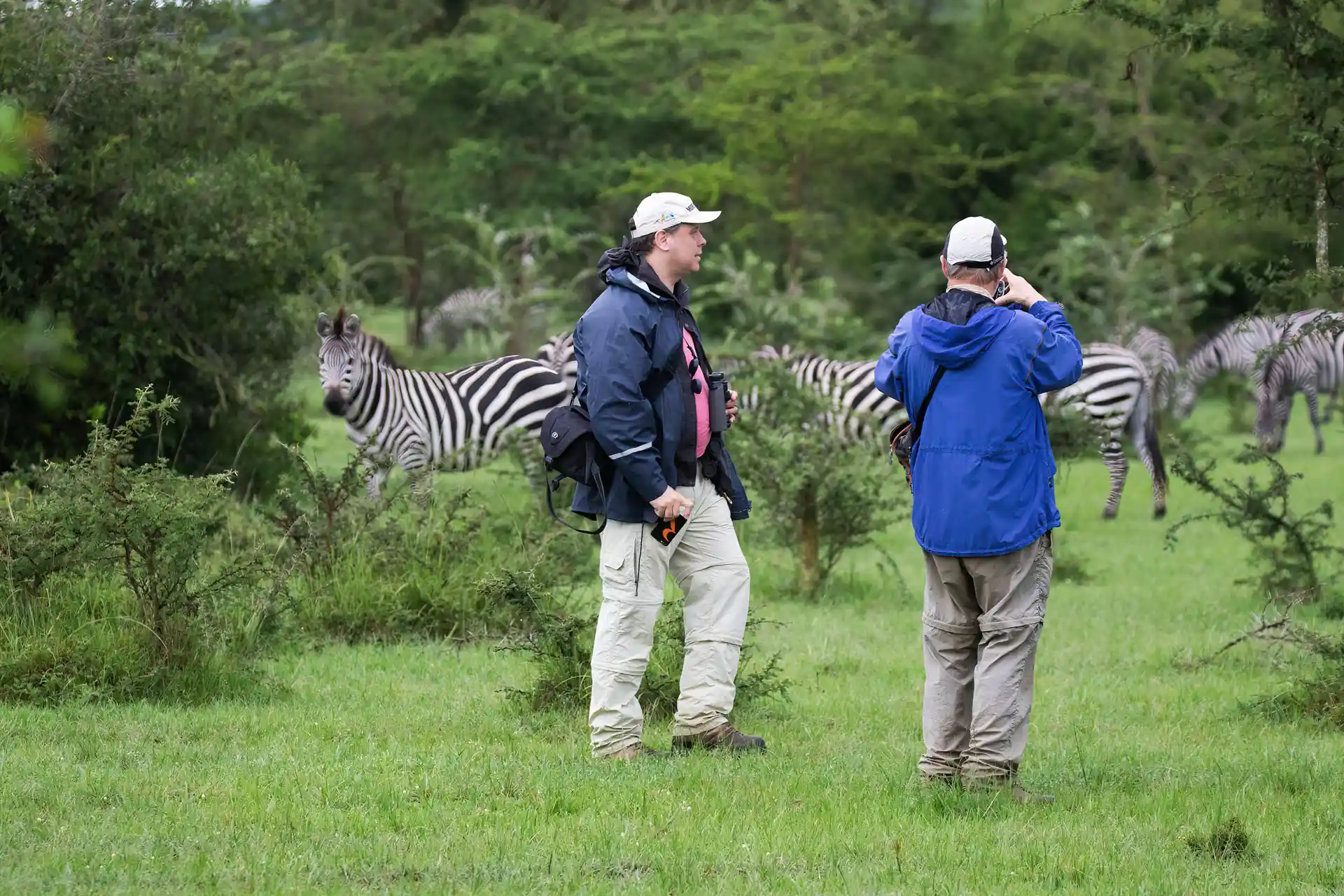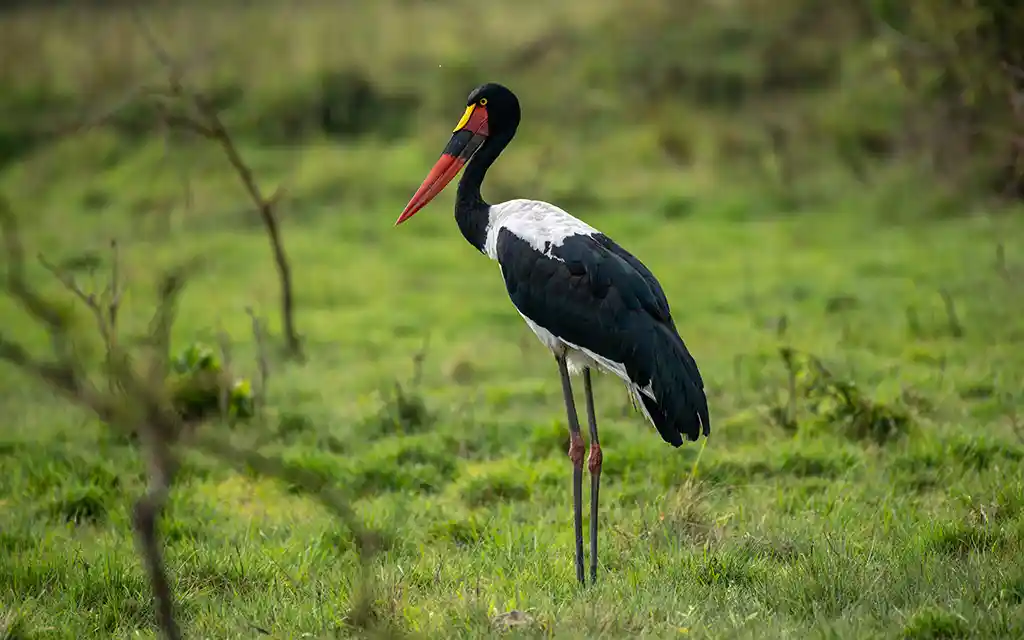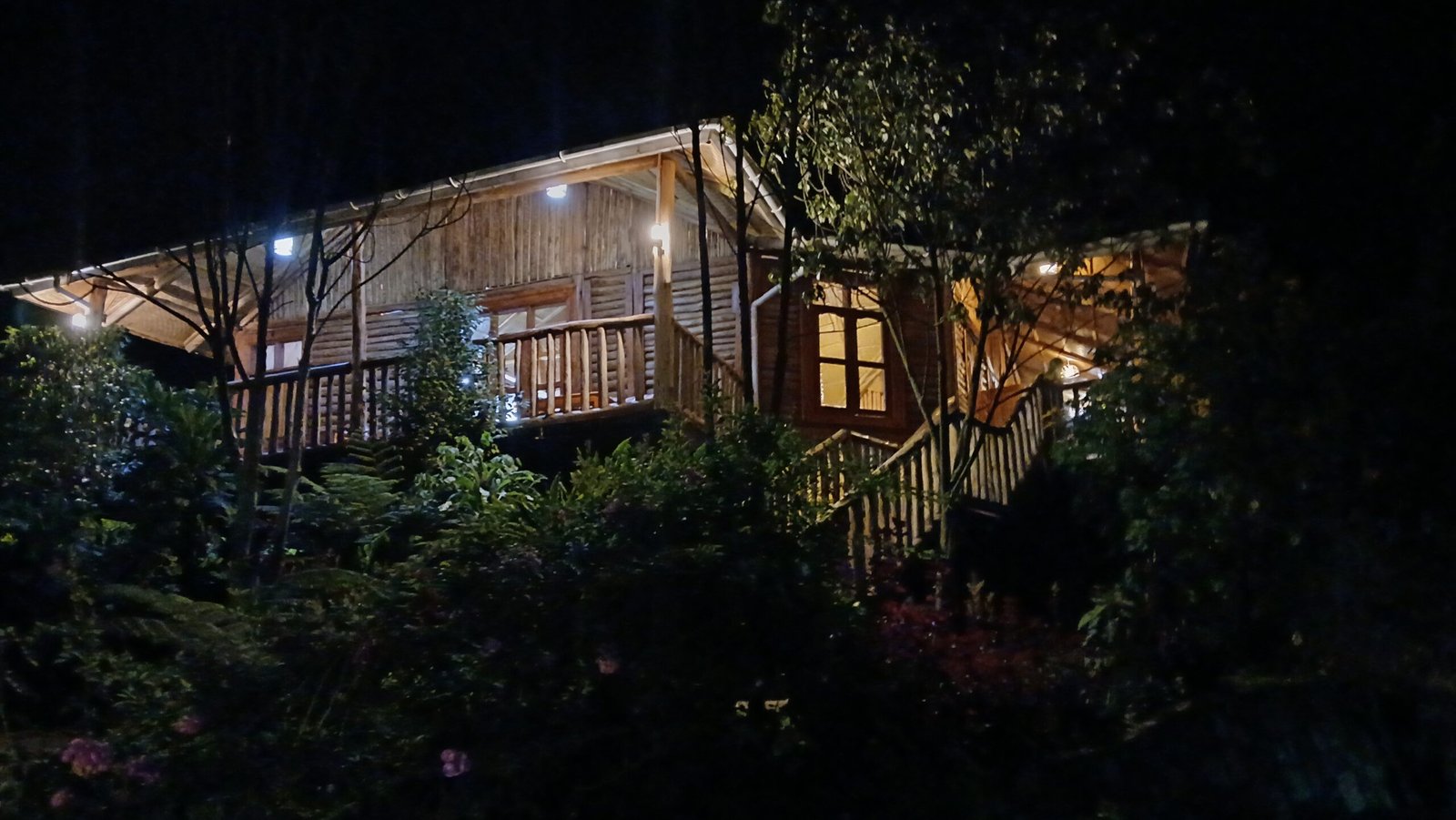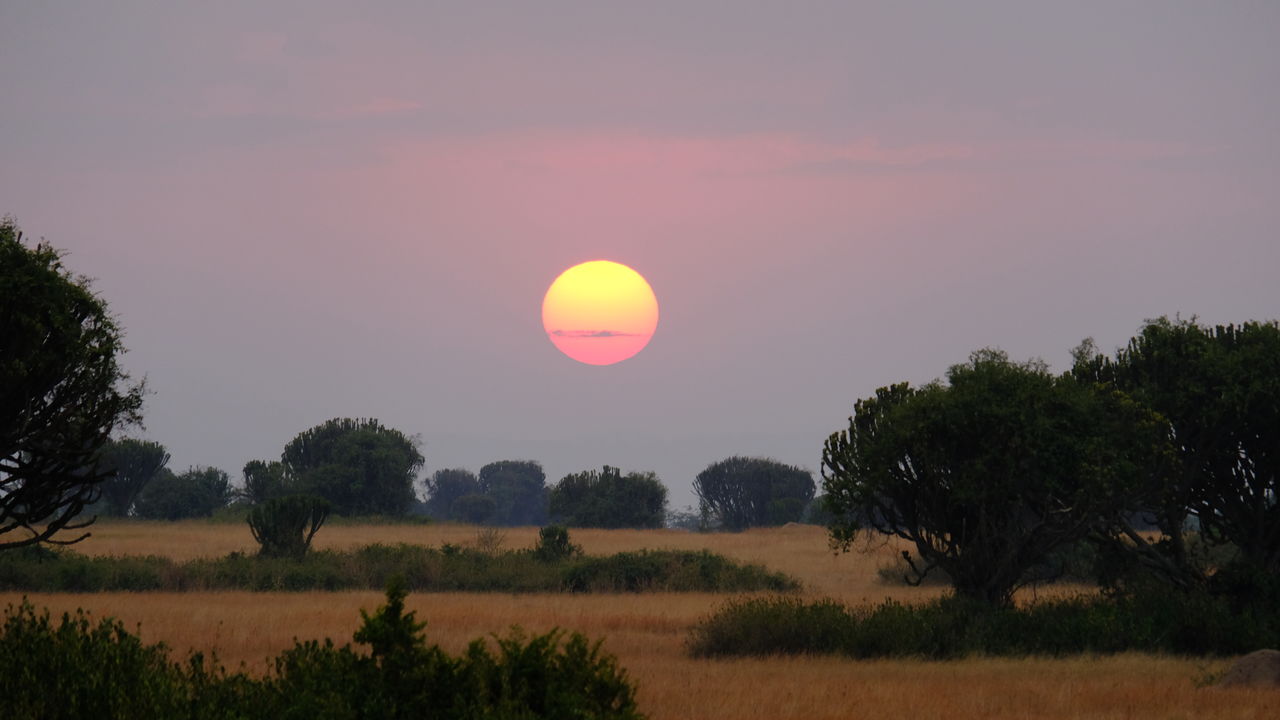Lake Mburo
Lake Mburo National Park
Lake Mburo National Park is Uganda’s smallest savannah park and it is conveniently located and easy to access. For example, it’s only about a 3-hour drive from Kampala, and if you’re coming from the southwest (where the mountain gorillas are), you can reach the park in half a day. Lake Mburo National Park often serves as a peaceful end to a safari in Uganda. The park is rich in wildlife, home to over 350 bird species and 68 different mammals. It’s the only place in Uganda where you’ll find impalas, elands, and klipspringers. The park also has the largest zebra population in Uganda, with around 5,000 zebras, and it likely boasts the highest concentration of leopards in the country. What makes Lake Mburo truly special is that it’s the only park in Uganda where you can enjoy a cycling safari, or even take a horse-riding tour. Don’t miss out on a walking safari or a boat trip on the lake, both of which offer incredible experiences!

Why Visit Lake Mburo National Park?
1. Game Drive
Despite being just 260 square kilometers, Lake Mburo National Park is home to a wide variety of animals. You’ll find plenty of zebras, waterbucks, bushbucks, and more than 100 Rothschild giraffes. The park is also home to elusive leopards and shy elands. Other animals that live here include buffalo, topis, oribis, warthogs, impalas, reedbucks, hyenas, genets, bush pigs, and white-tailed mongooses.
2. Walking safari
Put on your walking shoes, grab your backpack, and make sure you have enough water! On the walking safari, you’ll head out with a professional guide to search for wildlife in the park. Get ready to see zebras, buffaloes, hyenas, and stunning antelope up close. It’s a one-of-a-kind experience that’s available at only a few places in Uganda.
3. Horse riding safari
Whether you’re a beginner or an experienced rider, the horseback safari is an exciting adventure. Riding on horseback is one of the best ways to get up close to the animals, allowing you to experience wildlife in a unique way. Keep in mind that there’s a weight limit of 90 kg per person for this activity. You can book the safari on-site through your guide.
4. Mountain bike safari
Cycling through the park and enjoying the stunning views is perfect for active travelers! The mountain bike safari is a bit challenging because of the park’s varying elevations. If you’re unsure about your fitness level for this activity, Orugano Safaris travel experts will be happy to give you more details in a one-on-one conversation.
5. Boat trips on Lake Mburo
Visitors can also enjoy a two-hour boat cruise on Lake Mburo. The lake is home to around 300 hippos and plenty of Nile crocodiles. You can also spot three species of otters playing in the water: Congo clawless, Cape clawless, and spotted-neck otters. The lake is a great place for birdwatching too, with unique species like the African Finfoot, African Fish Eagle, Squacco Heron, Water Thick-knee, and Giant Kingfisher.
6. Night safari
The night safari begins as it starts to get dark, just before dinner. A professional ranger, who lives in Lake Mburo National Park, will guide you. They’ll use a big lamp to help spot nocturnal animals, and your help in spotting them is always appreciated. The night safari is exciting because it gives you a chance to see animals that are mostly active at night, like bush babies, hyenas, and leopards.
7. Bird watching
Birds are the true gems of Lake Mburo National Park, with over 300 species found here, many linked to the acacia trees and wetlands. For birdwatchers, it’s a dream come true. Lake Mburo is where many have their first exciting sighting of the shy African finfoot, known for its bright red feet, or the brown-chested lapwing that appears in November along the zebra trails. You’ll also hear the distinctive calls of the red-faced barbet in the woodlands, and in the wetlands, you might spot the giant, slow-moving shoebill standing quietly at the water’s edge. Other notable birds include the green-winged pytilia, papyrus yellow warbler, African paradise flycatcher, black-headed gonolek, and rufus-bellied heron.
8. Culture
Lake Mburo National Park is situated in the heart of the Bahima people’s ancestral land. The Bahima are famous cattle herders, known for their beautiful long-horned cows that you can see grazing on the way to the park. On community tours, whether by bike or on foot, visitors can explore the grazing land where wildlife and livestock share the space. Here, you can learn about the Bahima’s culture and traditions, and even try milking cows or making cow’s ghee. Just a few kilometers from the park, the Igongo Cultural Centre offers a glimpse into the history and traditions of the Ankole Kingdom.

Lake Mburo National Park accommodation
Planning a trip to Lake Mburo for your next African safari? The park has something for every budget, with a range of accommodation options both inside and outside the park. Whether you’re looking for a budget-friendly camping experience under the stars or a stay at a luxury lodge with stunning views, you’ll find plenty of choices to suit your style and needs.
Orugano Bwindi Lodge
Our lodge, Orugano Bwindi Lodge, is the perfect place to stay if you’re planning to go gorilla trekking in the Nkuringo Sector of Bwindi. It’s close to both the Virunga Volcanoes in Mgahinga Gorilla National Park and the beautiful Lake Mutanda. The Nkuringo area is home to several gorilla families, including Nkuringo, Bushaho, Christmas, Nkuringo, and Posho. This part of Bwindi is known for being the most scenic, with stunning views of the Virunga volcanoes.
How to Get to Lake Mburo National Park?
Lake Mburo National Park is easy to reach, just a 3-hour drive from Kampala. Alternatively, you can take a chartered flight from Entebbe International Airport to Mbarara’s airstrip, which is about a 90-minute drive from the park. It’s also a popular stop on the way between Kampala and Bwindi Impenetrable National Park, known for its gorilla trekking experiences, making it a great place to relax on the long journey.








